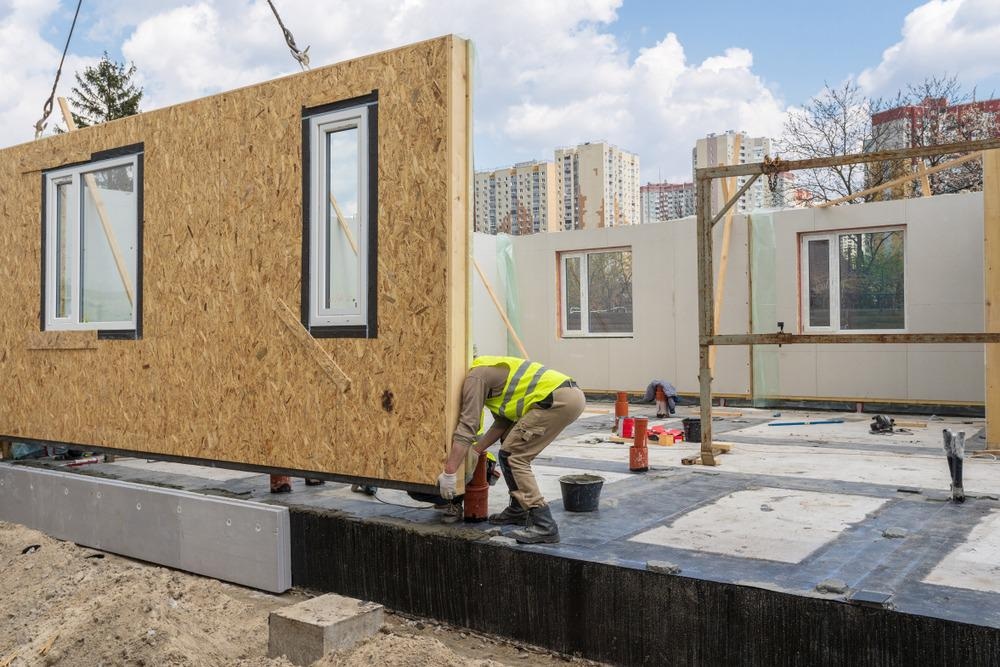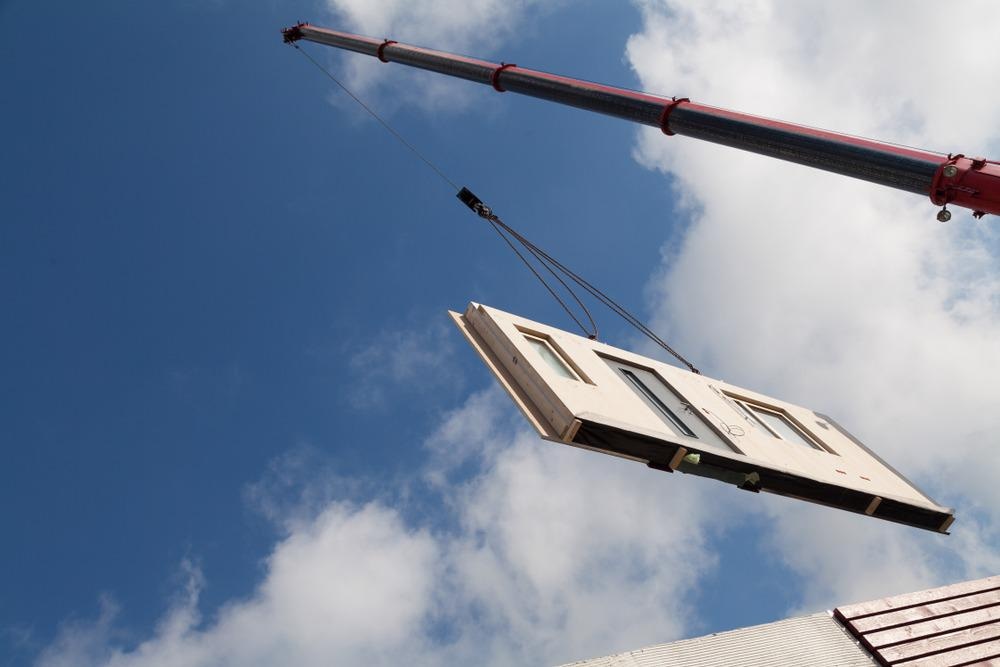Prefabricated construction has become increasingly popular in recent years. This article will consider this construction method, what advantages and disadvantages it has over other ways to build structures, and its place in a changing world and industry.

Image Credit: brizmaker/Shutterstock.com
What is Prefabricated Construction?
Prefabricated construction (or “prefab”) is a method where building components are constructed off-site in a factory setting and shipped to the construction site ready-made. There are a few different types of prefab that can be utilized by projects. Prefab has several advantages and disadvantages compared to other construction methods.
The Advantages of Prefab
The main advantage of prefabricated construction is the ability to ship ready-made components to construction sites. The controlled and safe factory environment where components are manufactured streamlines the construction process, making it cost-effective. There is also less worry about factors such as interruptions caused by adverse weather conditions and vandalism. Prefabricated methods also save on labor costs and create a safer working environment.
Additionally, fabricating structural components off-site is less environmentally damaging and causes less waste. Air, water, and noise pollution, which are typically caused by traditional construction projects, are reduced. Prefabricated building parts are also useful for projects where there is a high degree of redundancy, such as hotels, student accommodation, and hospitals. Furthermore, prefabricated methods allow a high degree of quality control in building projects.
A final advantage of prefab structures is the recovery of materials at the end of their serviceable life. They can be dismantled rather than being demolished. Materials can be then reused, rather than automatically going to landfill.
Modular Vs Panelized Prefab Methods
There are two main categories of prefabrication methods: Modular and panelized. In panelized construction, pre-made structural panels are used and in modular construction, complete box-like units are constructed. In modular construction, all the elements such as plumbing and electrics are pre-installed in the unit. Modular methods require less work on-site than panelized methods and are more specific.
Common Materials Used
Prefabricated structures have specific requirements that influence the choice of materials used in their construction. Different materials are used in different construction elements such as walls, roofs, design elements and so forth. Some materials used in prefabricated structures are concrete, wood, steel, aluminum, and glass. Additionally, recycled and reclaimed materials can be used, reducing the environmental footprint of prefab buildings.

Image Credit: zabanski/Shutterstock.com
The History of Prefabricated Homes
Arguably, the origins of prefabricated buildings stretch back many centuries. The Romans used concrete molds for aqueducts and tunnels, and William the Conqueror used prefabricated defenses during his invasion of England in 1066. As early as the 17th century, the English shipped panelized wooden housing to Cape Ann in what was to become the United States. This house was used for the fishing fleet and could be disassembled, moved, and reassembled in a new location.
The 19th century saw the increased use of prefabricated homes which could be shipped to places like Australia and prefab homes were used during the Californian gold rush. The Crystal Palace in London, which was constructed in 1851, used prefabricated sections of steel, wood, and glass. However, it was not until the advent of “home kits” in the early 20th century that the concept of prefabricated homes really took off.
During the 20th century, an acute shortage of labor, widespread infrastructure damage, and the need to house returning soldiers after the two world wars facilitated the large-scale adoption of prefabricated structures. Today, there are numerous examples of prefabricated structures worldwide, from neighborhoods of family homes to schools, factories, and public buildings.
The Use of Modern Methods of Construction in Prefabricated Homes
Modern methods of construction (MMCs) are changing the face of architecture worldwide. Compared to traditional methods of construction (TMCs), they confer significant cost, environmental, and safety advantages for the modern construction industry. Their use in prefabricated housing is on the rise.
Examples of MMCs include volumetric construction, panellized units, and hybrid techniques which combine both approaches. Other methods include pre-cast concrete foundations, mechanical engineering composites, and floor or roof cassettes.
An MMC which shows huge potential for the construction industry and prefabricated housing is additive manufacturing, otherwise known as 3D printing. Additive manufacturing is faster, more cost-effective, and produces significantly less waste than traditional construction methods. Materials (commonly concrete) are extruded from a printer nozzle to fabricate construction elements layer-by-layer. Other materials which are being researched include polymers and metals.
Construction elements can be printed in a factory setting and then assembled on-site. Using this technology significantly reduces the environmental footprint of prefab structures and facilitates a faster turnaround in project time, considerably saving on cost. Several buildings, such as a bridge in Amsterdam and an office building in Dubai have been produced by this method. Neighborhoods in California and Texas are in development.
Prefabricated Construction: The Future
The construction industry is increasingly requiring methods that reduce cost, save time, mitigate environmental damage, and improve site safety. Prefabricated construction can overcome these challenges and is gaining attention in the industry.
Prefab building projects are increasingly taking advantage of novel construction methods such as additive manufacturing, robotic technologies, and software suites that can aid design and provide data off-site. Additionally, novel materials such as specialized plastics for 3D printing and carbon fibers are being explored, as well as recycled and recovered materials which further reduce the environmental impact of the industry.
Further Reading
Prefab Museum (2018) A short history of prefabrication [online] prefabmuseum.co.uk. Available at:https://www.prefabmuseum.uk/content/history/short-history-prefabrication
Designing Buildings (2021) Modern methods of construction [online] designbuildings.co.uk. Available at:https://www.designingbuildings.co.uk/wiki/Modern_methods_of_construction
Lopez, D & Froese, T.M (2016) Analysis of Costs and Benefits of Panelized and Modular Prefabricated Homes [online] Procedia Engineering 145 pp. 1291-1297 | sciencedirect.com. Available at:https://www.sciencedirect.com/science/article/pii/S1877705816301734
Disclaimer: The views expressed here are those of the author expressed in their private capacity and do not necessarily represent the views of AZoM.com Limited T/A AZoNetwork the owner and operator of this website. This disclaimer forms part of the Terms and conditions of use of this website.